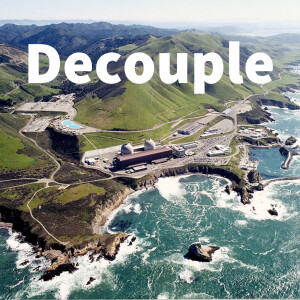
Let The Market Decide? A History of Government Intervention in Energy
 2021-11-28
2021-11-28
In this episode, Dr. Keefer and economist Edgardo Sepulveda cover a lot of ground:
• Edgardo’s new website that includes the electricity profiles of 24 OECD countries and whether, using which tech and at what price they have lowered emissions over the last 60 years is at (https://edecarb.org/)
• Edgardo noted the increasing recognition by many expert economists that "restructured" energy-only generation markets probably cannot facilitate the massive, long-term investment necessary for electrification, especially with the entry of (subsidized) renewables, is summarized here: (https://threadreaderapp.com/thread/1389298276827021319.html)
• Chris and Edgardo discussed the most recent global electricity investment data from the IEA, including that for 2020’s global $800 billion investment (including $300 billion of transmission and distribution), renewables made up 45% and nuclear only 5%. Nevertheless, the global total is less than half estimated ($2.3 trillion) amount for net zero by 2050 (https://www.iea.org/reports/world-energy-investment-2021)
• Nevertheless, Edgardo’s preliminary statistical analysis suggests that renewables entry is associated with electricity price increases. One example is Germany’s residential renewables surcharge, which totaled 25.6 billion in 2018 (https://www.iea.org/reports/germany-2020), which households appear to support, while in Ontario voters revolted, booting out the political party that introduced the GEA, with the incoming Government revoked the legislation and started subsidizing electricity prices, including $3.1 billion/year just for renewables https://www.ontario.ca/page/expenditure-estimates-ministry-energy-northern-development-and-mines-2021-22#section-6
• Speaking of investment, Edgardo and Chris noted that Bruce had just announce the over-subscription of what is billed as the world’s first “Green” nuclear bond for CAD$500 million. The “Second Party Opinion” (SPO) was provided by Cicero, which out of their three shades of green, gave it a “medium green” rather than a “dark green” set aside for wind and solar and the like, because of residual risks on proliferation, waste and radiation accidents: https://www.brucepower.com/wp-content/uploads/2021/11/Second-Opinion-Bruce-Power-16July2021final.pdf
• Edgardo noted that in his most recent blog looking at the cost-benefit of refurbishing Pickering Nuclear Generation Station (PNGS) versus going forward with the IESO replacement scenario (https://www.ieso.ca/en/Learn/Ontario-Supply-Mix/Natural-Gas-Phase-Out-Study), the refurbishment scenario is a better financial and cost abatement cost option (https://edecarb.org/analysis/ontario-ix)
More Episodes
 2022-10-19
2022-10-19
 2022-10-10
2022-10-10
 2022-09-27
2022-09-27
 2022-09-26
2022-09-26
 2022-09-19
2022-09-19
 2022-09-12
2022-09-12
 2022-08-22
2022-08-22
 2022-07-19
2022-07-19
 2022-07-12
2022-07-12
 2022-07-05
2022-07-05
 2022-06-20
2022-06-20
 2022-06-06
2022-06-06
Create your
podcast in
minutes
- Full-featured podcast site
- Unlimited storage and bandwidth
- Comprehensive podcast stats
- Distribute to Apple Podcasts, Spotify, and more
- Make money with your podcast
It is Free
- Privacy Policy
- Cookie Policy
- Terms of Use
- Consent Preferences
- Copyright © 2015-2024 Podbean.com





